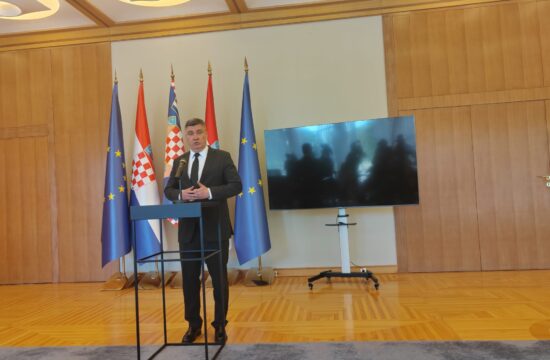Almost one-fifth of workers in Croatia are employed on fixed-term contracts, Croatia has the highest rate of precarious employment in the European Union but the number of hours Croatians work per week is higher than the EU average, the Croatian Bureau of Statistics (DZS) reported on Monday.
According to data for Q4 2018, the share of workers with fixed-term contracts in the total number of workers was 19%, which is virtually every fifth worker in Croatia.
According to Eurostat figures, Croatia has the highest rate of precarious employment in the EU – 6.9% of those employed have fixed-term contracts of up to three months.
Croatia is followed by France (4.9%) and Spain (4.6%) while at the EU level 2.2% of workers are precarious workers. Romania has the lowest percentage of precarious workers, 0.2%.
The DSZ underscores that the employment rate at the EU level has stagnated or increased mildly since 2010, when it stood at 64.1%. In 2018 that rate was 68.6%. The highest rates of employment were registered in Sweden (77.5%), the Netherlands (77.2%) and Germany (75.9%) while the lowest rates were registered in Greece (54.9%), Italy (58.5%) and Croatia (60.6%).
Indicators of working life show that working life is the shortest in Mediterranean countries.
The average working life before retirement in Sweden is 41.7 yeas. Sweden is followed by the Netherlands (40.1 years) and Denmark (39.7 years). On the other hand, Italians have an average working life of 31.7 years, the shortest in the EU, where the average is 35.9 years. In Croatia the average working life is 32.5 years.
Number of hours worked in Croatia above EU average
A shorter working life, however, does not necessarily mean less work as, for example, the average number of hours worked per week in Greece is 41.9 hours, while the EU average is 37 hours.
Croatians work 39.5 hours a week on average.
In Croatia, just as in the EU, the greatest share of those employed have secondary school qualifications.
More than one-third of employed persons in the EU have university qualifications as do 28.7% of those employed in Croatia. In Ireland, half the working population has higher education qualifications (50%) while the lowest rate was registered in Romania (21.3%).
The share of those with primary-school education in the EU is 16.6%, while in Croatia that share is 8.2% and in Portugal it is 45.5%.
One-third of Europeans continue with further education after completing their formal education (31.9%). The highest level of further education was registered in the Netherlands (60.6%), followed by Sweden (58.6%) and Finland (56.3%). In Croatia, 18.7% of those employed attend further training courses. The lowest rates were recorded in Greece (7.6%), Romania (7.8%) and Italy (11.3%).
Unemployment rate in Croatia 8.5%
In the past ten years, a record-high unemployment rate at EU level of 10.9% was recorded in 2013. It has been falling since then and the latest data indicates an unemployment rate of 6.8%.
Greece had the highest unemployment rate in 2013, with more than one-fifth of the working population being unemployed. In 2018 the unemployment rate in Greece was 19.3%, the highest in the EU. Greece was followed by Spain (15.3%) an Italy (10.6%).
Croatia, too, recorded its highest unemployment rate, of 17.4%, in 2013. Since then unemployment has gradually decreased and in 2018 it stood at 8.5%.
Eurostat notes that the difference in the employment rate between women and men at the EU level was 11.5 percentage points. The greatest gender gap was registered in Malta (24.1 percentage points) and the smallest in Lithuania (1.0 percentage points).
A little more than one-fourth of employed women in the EU (26.7%) are in management positions. In Croatia the percentage is even lower, at 17.2%.




